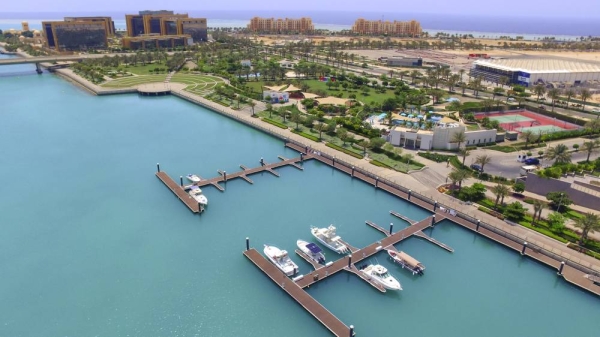The Saudi Red Sea Authority (SRSA) has ambitious goals to develop a strong coastal tourism sector in the Red Sea region, aiming to contribute around SR85 billion to the GDP by 2030. This plan includes capturing 30 percent of the Kingdom’s leisure tourism and 40 percent of total entertainment spending, attracting a total of 19 million tourists, and creating more than 210,000 jobs. A report titled “Invest in Coastal Tourism,” released by SRSA in collaboration with the Ministry of Investment, outlines the significant role of coastal tourism in achieving the objectives of Saudi Vision 2030. This includes diversifying the national economy, attracting investments, generating new income sources, and creating job opportunities.
The report emphasizes the importance of protecting the marine environment to ensure its sustainability for future generations. Coastal tourism relies heavily on the natural beauty and resources of the Red Sea region, making environmental conservation crucial for the sector’s long-term success. By promoting sustainable practices and responsible tourism, SRSA aims to preserve the marine ecosystem and support the livelihoods of coastal communities. This commitment to environmental stewardship aligns with the goals of Saudi Vision 2030, which prioritizes sustainable development and conservation efforts to protect the Kingdom’s natural resources.
In addition to promoting environmental sustainability, the report underscores the economic benefits of investing in coastal tourism in the Red Sea region. By attracting millions of tourists and creating hundreds of thousands of jobs, the sector has the potential to significantly boost the local economy and enhance the overall quality of life for residents. The report highlights the opportunities for both local and international investors to participate in the development of coastal tourism projects, leveraging the region’s unique attractions and strategic location to drive growth and prosperity.
Furthermore, the report outlines the key strategies for advancing the coastal tourism sector in the Red Sea region, including infrastructure development, regulatory reforms, and marketing campaigns. By improving access to key destinations, streamlining permitting processes, and raising awareness about the region’s offerings, SRSA aims to enhance the overall visitor experience and position the Red Sea as a premier tourism destination. These initiatives are designed to attract a diverse range of travelers, from luxury seekers to adventure enthusiasts, and showcase the rich cultural heritage and natural wonders of the region.
As part of its commitment to driving the goals of Saudi Vision 2030, SRSA is working closely with government agencies, private sector partners, and local communities to support the growth of coastal tourism in the Red Sea region. By fostering collaboration and partnerships, the authority aims to create a sustainable tourism ecosystem that benefits all stakeholders and contributes to the Kingdom’s economic and social development. With the right investments and policies in place, the Red Sea region has the potential to become a world-class tourism destination, offering unparalleled experiences for visitors and generating lasting benefits for the local economy.
In conclusion, the Saudi Red Sea Authority’s vision for developing a thriving coastal tourism sector in the Red Sea region represents a significant opportunity for economic growth, job creation, and environmental stewardship. By investing in sustainable tourism practices and promoting the region’s unique attractions, SRSA aims to position the Red Sea as a premier tourism destination, attracting millions of visitors and generating billions of riyals in revenue. This bold vision aligns with the goals of Saudi Vision 2030 and reflects the Kingdom’s commitment to sustainable development and conservation. With the right strategies and partnerships in place, the Red Sea region has the potential to become a global leader in coastal tourism, offering unparalleled experiences for travelers and creating lasting benefits for the local community.











